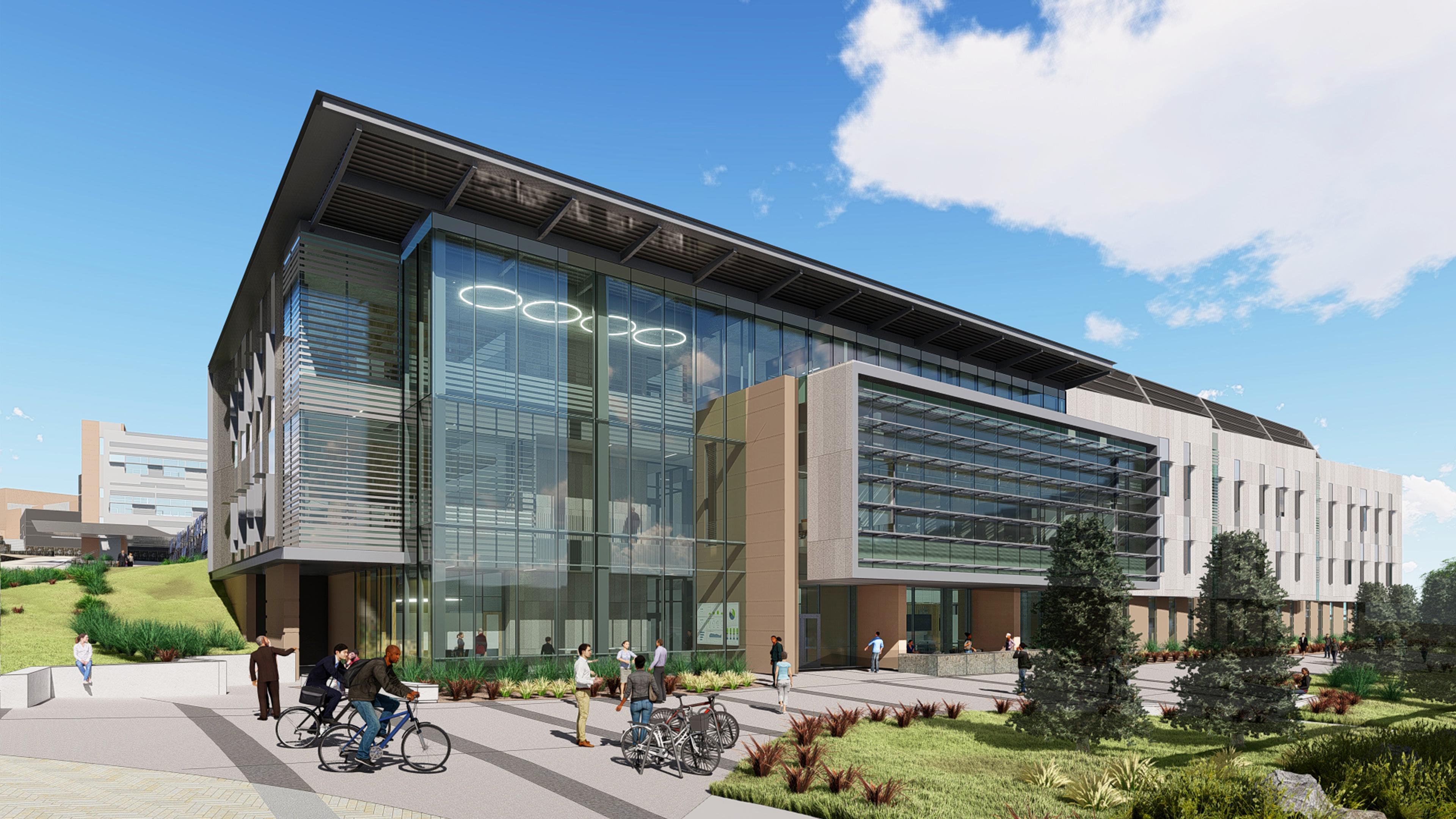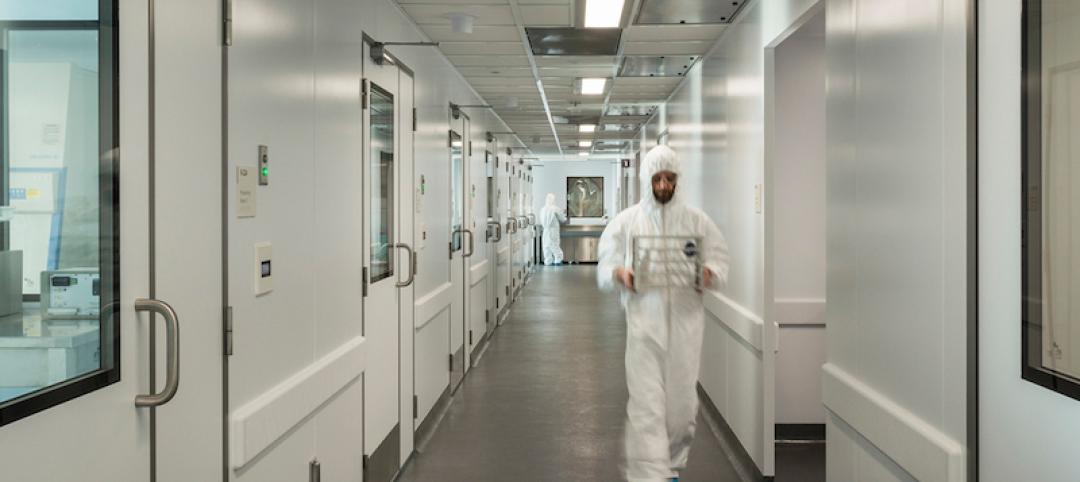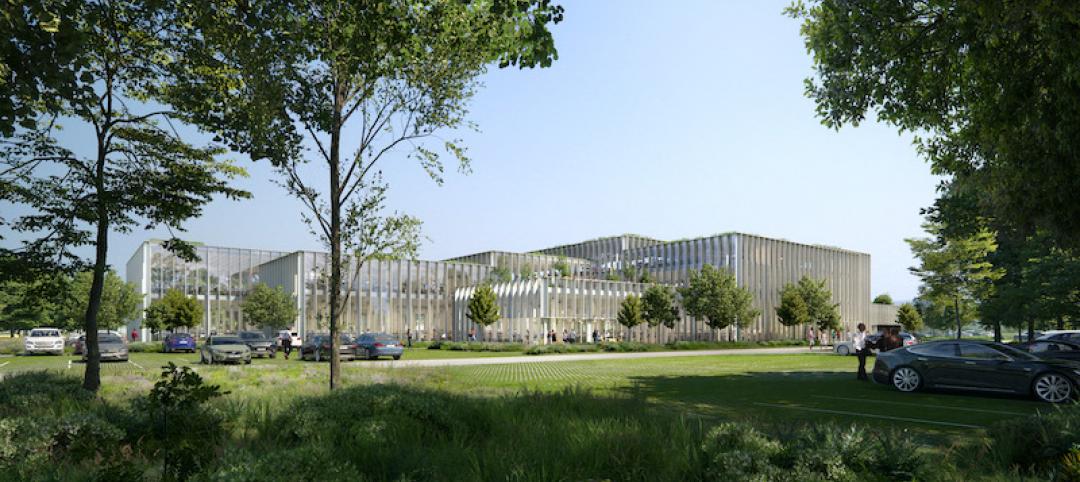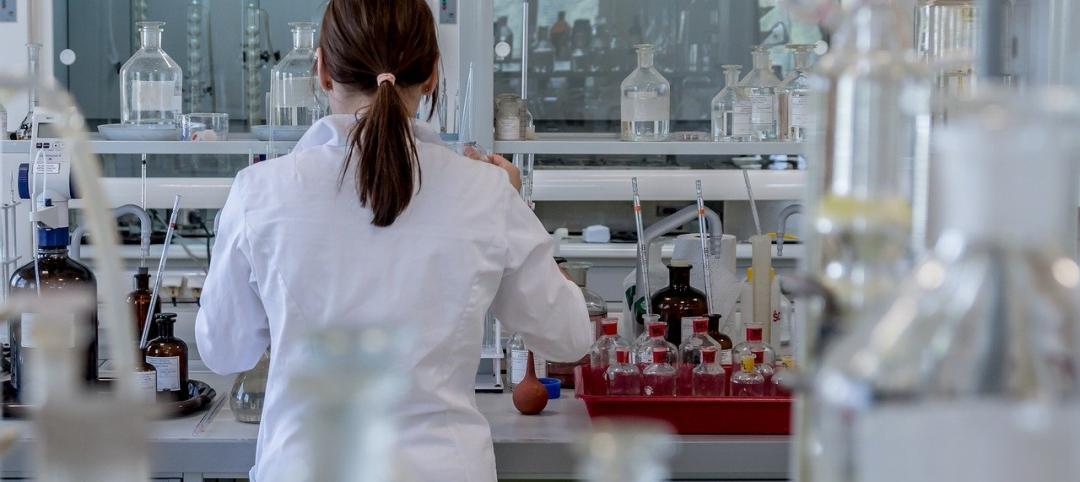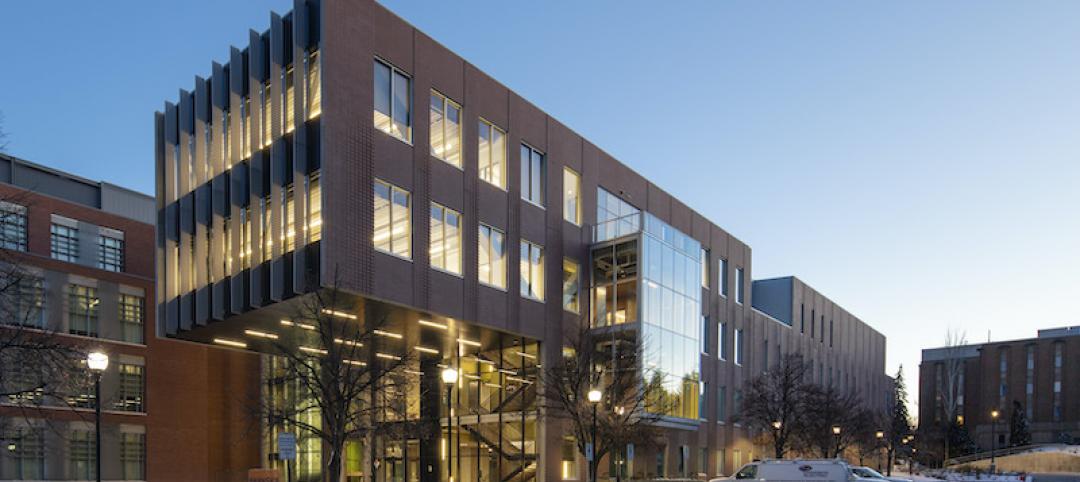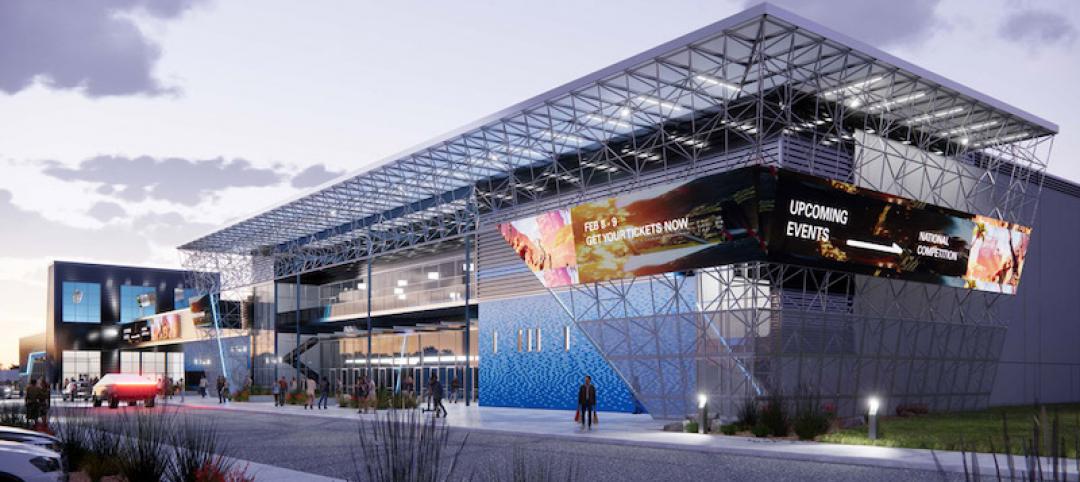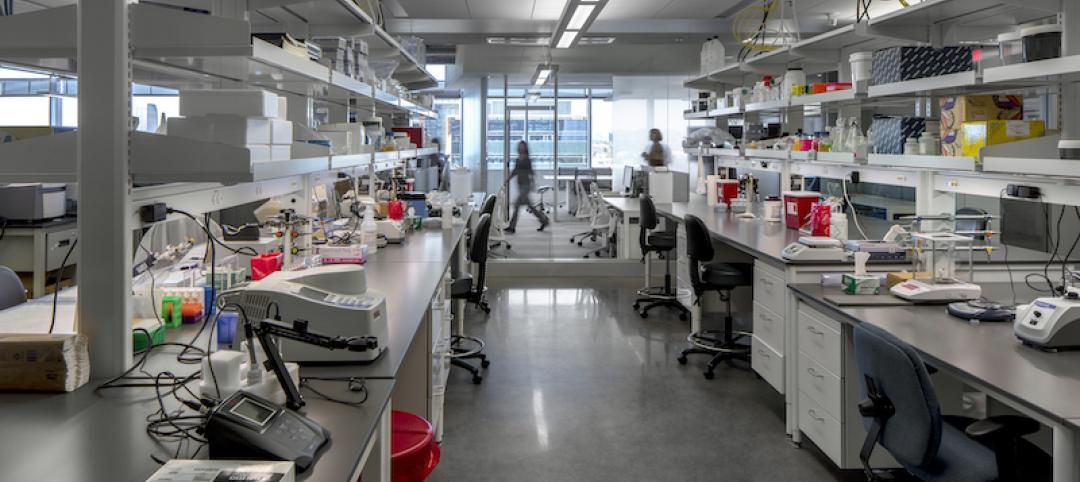The U.S. Department of Energy’s National Renewable Energy Laboratory (NREL) has selected JE Dunn Construction and SmithGroup as the design-build team for a new laboratory facility that will accelerate market-ready products needed for a clean energy transition.
As the new face of NREL’s South Table Mountain Campus in Golden, Colo., the 127,000-sf Energy Materials and Processing at Scale (EMAPS) laboratory will create a direct path from lab-scale materials and process innovations to pilot-scale integration and production. The project is slated to break ground in late 2024.
The laboratory’s design will provide opportunities for engineers, scientists, industry partners, and other DOE laboratories to work together in shared lab facilities focused on clean energy innovations. This collaborative, multidisciplinary approach will accelerate the process scale-up and market adoption of advanced energy materials.
Energy storage, advanced manufacturing among clean energy initiatives
Specifically, EMAPS will enable materials and process innovations in energy storage, advanced manufacturing, grid modernization, and net-zero chemicals and fuels for transportation and industrial decarbonization.
In addition, the laboratory will address end-of-life and circularity challenges across multiple energy technology platforms with a focus on polymers, packaging, and waste streams during and after production.
With building design now underway, EMAP will provide modern, open, and flexible spaces that can accommodate rapid experimentation among researchers. Featuring a three-story collaborative lab and office tower, the center will facilitate flexibility and reconfigurability to serve different research insights and needs. Researchers will be able to move easily from workstation computers to testing in labs to manufacturing testing in pilot bays.
The design will align with NREL’s focus on sustainability, solar orientation and daylighting, energy efficiency, and site preservation. With its sustainable, high-performance design, EMAPS will aim for a minimum of LEED Gold certification.
A decade ago, JE Dunn and SmithGroup partnered with NREL to complete the Energy Systems Integration Facility (ESIF), a 180,000-sf research building adjacent to the future site of EMAPS.
On the Building Team:
Owner: U.S. Department of Energy’s National Renewable Energy Laboratory (NREL)
Design architect, architect of record, and MEP engineer: SmithGroup
Structural engineer: Martin/Martin
General contractor: JE Dunn Construction
Related Stories
Architects | Aug 5, 2021
Lord Aeck Sargent's post-Katerra future, with LAS President Joe Greco
After three years under the ownership of Katerra, which closed its North American operations last May, the architecture firm Lord Aeck Sargent is re-establishing itself as an independent company, with an eye toward strengthening its eight practices and regional presence in the U.S.
Laboratories | May 6, 2021
The big shift: How laboratory design should respond to personalized medicine
Crucial to the success of personalized medicine is the “big shift” away from large-scale pharmaceutical manufacturing to small-scale lab manufacturing.
Laboratories | Mar 10, 2021
8 tips for converting office space to life sciences labs
Creating a successful life sciences facility within the shell of a former office building can be much like that old “square peg round hole” paradigm. Two experts offer important advice.
Giants 400 | Dec 3, 2020
2020 Science & Technology Facilities Giants: Top architecture, engineering, and construction firms in the S+T sector
HDR, Jacobs, and Turner head BD+C's rankings of the nation's largest science and technology (S+T) facilities sector architecture, engineering, and construction firms, as reported in the 2020 Giants 400 Report.
Giants 400 | Dec 3, 2020
2020 Laboratory Facilities Sector Giants: Top architecture, engineering, and construction firms in the U.S. laboratory facilities sector
Affiliated Engineers, HDR, and Skanska top BD+C's rankings of the nation's largest laboratory facilities sector architecture, engineering, and construction firms, as reported in the 2020 Giants 400 Report.
Laboratories | Nov 16, 2020
Washington State University’s new Plant Sciences Building opens
LMN Architects designed the project.
AEC Tech Innovation | Sep 18, 2020
New Innovation Center should heighten Port San Antonio’s tech profile
The facility will include a 2,500-seat arena and serve as new home for the city’s S&T museum.
Laboratories | Aug 25, 2020
Video: What's driving the boom in life sciences real estate?
JLL's Audrey Symes discusses the drivers of growth across the nation's life sciences cluster hubs.
Laboratories | Jul 24, 2020
Customized labs give universities a recruiting edge
CO Architects is among a handful of firms that caters to this trend.


